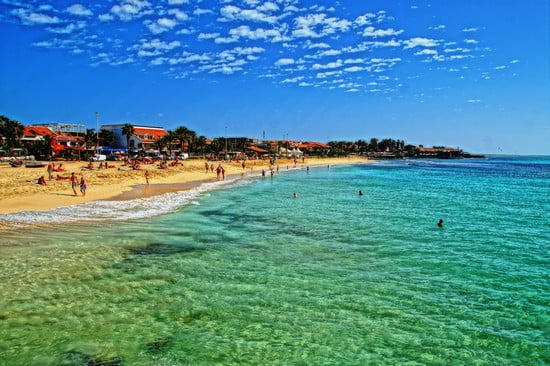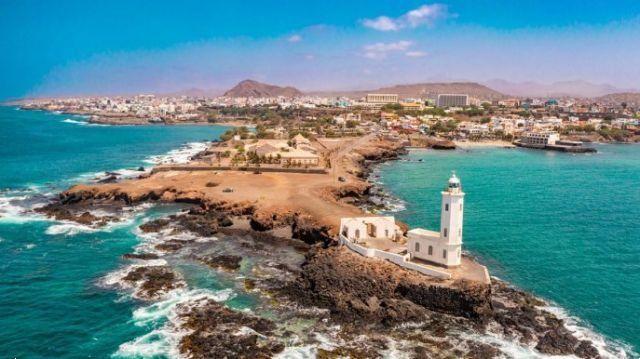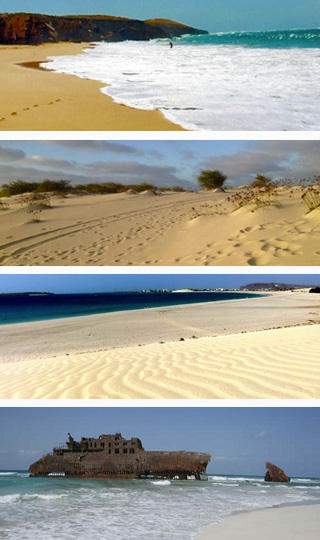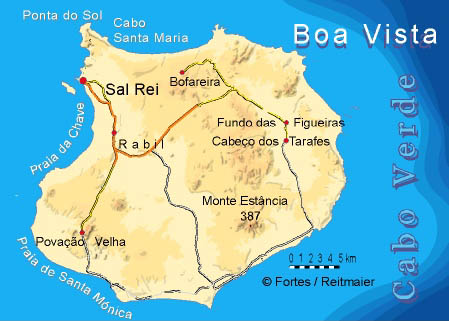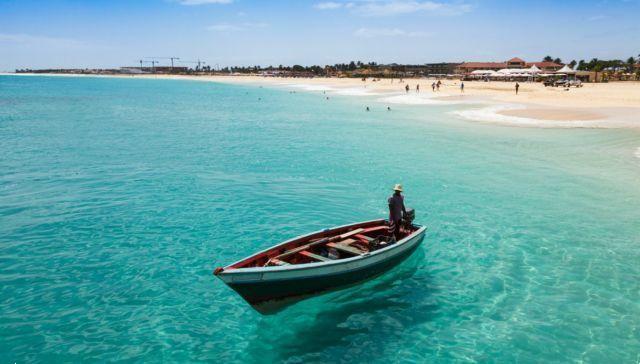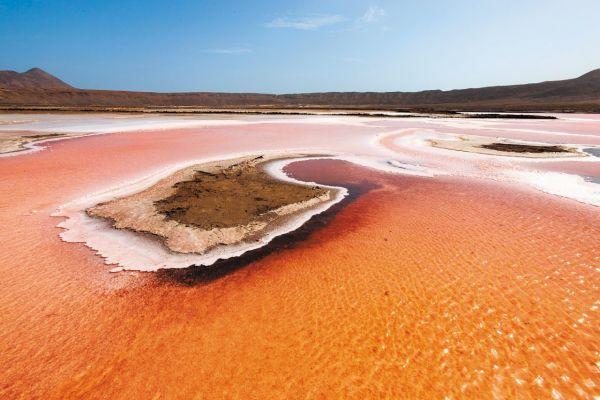 What to do in Cape Verde: beaches, water sports and travel tips to best explore the wind islands off the coast of Africa.
What to do in Cape Verde: beaches, water sports and travel tips to best explore the wind islands off the coast of Africa.
Nestled in the Atlantic, the Cape Verde archipelago is made up of a group of volcanic islands arranged in a semicircle, just over 500 kilometers from the coast of Senegal. Nine of its ten largest islands are inhabited and offer visitors long, white, pristine beaches lapped by crystalline waters, alternating with lunar and desert landscapes, mountain peaks and valleys of sparkling green: views that captivate the eyes and hearts of tourists.
The islands - ilhas - of Cape Verde are conventionally divided into two main groups: Ilhas do Barlavento (which dance with the wind, because it blows strong) to the north and the Ilhas do Sotavento (the islands under the wind) to the south. The winds referred to are the trade winds that blow from the African continent. The group of Windward (o Sopravento) is a constituent of Santo Antão, São Vicente, São Nicolau, Ilha do Sal, Boa Vista. Nel Leeward (or Sottovento) there are Maio, Santiago, Fogo, Brava.
The volcanic origin of the Cape Verde islands allows you to start from the beaches and climb up to 2800 meters high. This allows you to admire extreme landscapes, from the white shoreline to the green mountains immersed in fog. From the coast to the hills and back: to contemplate the king shark, for example, you will have to go as far as Rife da Parda, in the eastern part of the island of Sal. Sharks here are known for advancing to within a few meters of the shore. Therefore, extreme caution is necessary when looking for them.
From Santa Maria, still on the island of Sal, continuing along the coast, to the south-east, for about a kilometre, you reach Praia Alfonso. Here, some small wooden buildings - old and abandoned - offer tourists the opportunity to take refuge in the shade for a refreshing break. The small beach protected from the waves then reveals its rich seabed corals while poking around in the pond behind the buildings, you can discover tropical fish and crabs, for a priceless snorkeling opportunity.
Before tourism began to flourish, the main local industry in Cape Verde was salt. Pedra de Lume is the largest salt mine of the island of Sal and is located 3 kilometers east of the city of Espargos and 12 kilometers north-east of Santa Maria. If they wish, visitors to Pedra de Lume can also take "salt baths" in the lakes within the area which contributes to making the area one of the great tourist attractions of the place.
For those who want to go kitesurfing, the best place is the beach of Costa de Fragata, on the island of Sal, reachable with a walk of about 35-40 minutes along the coast in a northerly direction, away from Santa Maria. This stretch of beaches is also known for being the nesting area of large sea turtles. Still starting from Santa Maria, but this time in a north-west direction, you arrive at Ponta Preta, a highly attractive destination for those who practice windsurfing.
A Buracano, north-west of Santa Maria, there is the famous natural swimming pool that the undertow has carved into the black rock of the coast. If you dedicate yourself to scuba diving while swimming in the clear waters, you will discover a mysterious submerged tunnel, located right next to the pool. For those who love nightlife, Santa Maria it is the ideal place to find bars and discos present throughout the town centre.
The dry tropical climate causes the average temperatures in Cape Verde to fluctuate around 25°C, with scarce and never intense rainfall. But the best time to visit the archipelago is from November to July: minimum temperatures drop to 18°C (in the months of January and February), with maximums that touch 30°C with the desert influence of nearby Africa in determine the temperature difference between day and night. Minimum humidity and mild temperatures, here is the ideal time for winter holidays at the sea.
Flights from European and American origin arrive, in the majority of cases, at the Amilcar Cabral international airport which is located on the island of Sal, about 200 kilometers north-east of Praia, the capital of the Republic of Cape Verde. The international airport of Praia, however, is the one preferred by flights coming from the African continent. The islands of Santiago, Sal and São Vicente are connected by internal flights daily while the other islands have less frequent, but still quite regular, connecting flights.
Shipping companies offer daily connections via ferry between Santo Antão and São Vicente. The other islands have sea connections which rarely have regular crossings. To move within the islands there are three possibilities: minibuses or pickups, taxis and the urban bus service. The cheapest choice is the latter because the other two are usually managed by private individuals, with passages of variable frequency and comfort not always up to expectations.




